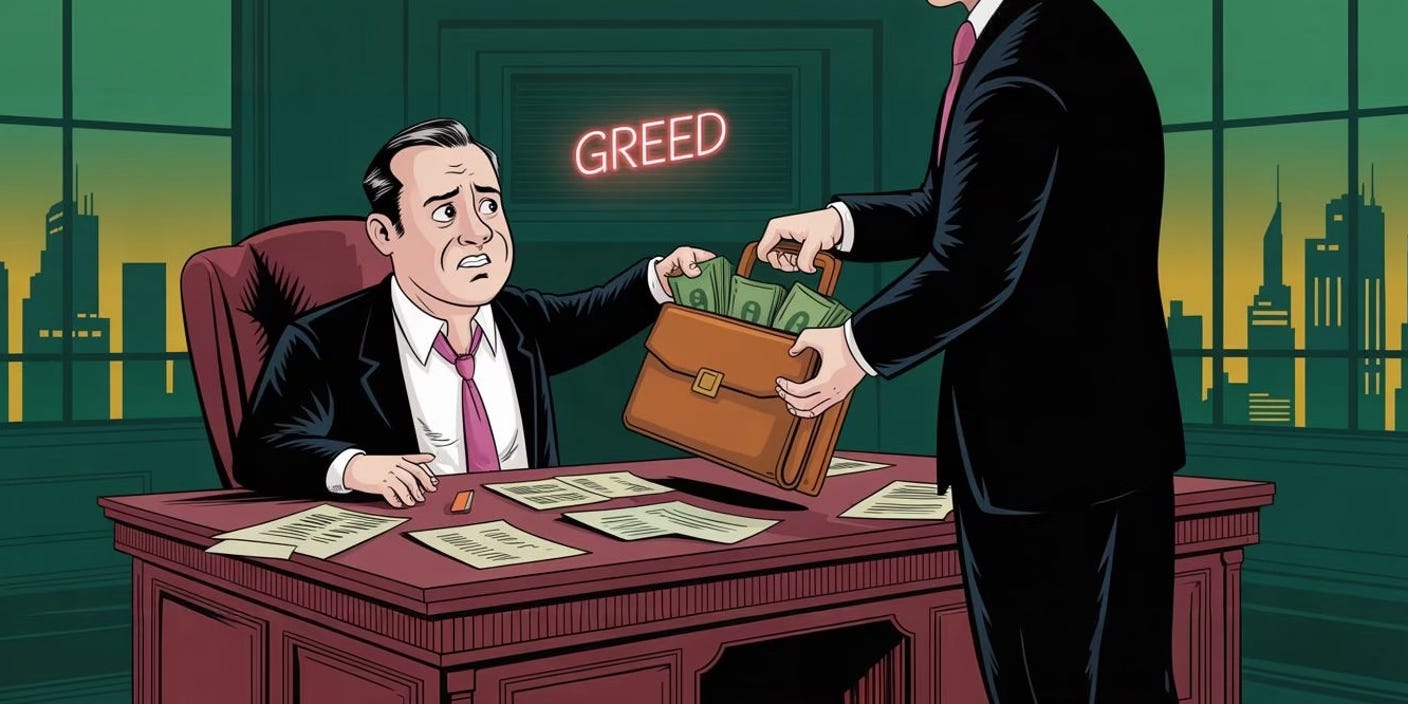The Dark Side of Wall Street Analysts
Studies show analysts are more positive about companies they’re connected to
Over the last 20 years, the world of stock research on Wall Street—specifically from the “sell-side” folks who work for big banks—has changed a lot, and not always for the better. What used to be a trusted source of smart insights about companies has turned into something that’s often biased, full of conflicts, and not as helpful as it should be. This hurts how markets work overall.
The business model that breeds bias
At its core, the way these research teams make money creates big problems. These departments actually lose money—spending over $8 billion a year—and they have to make up for it by helping their banks win deals or earn trading fees. So, research isn’t just about giving honest advice; it’s more like a tool to keep clients happy and bring in business.
The numbers show this bias clearly. For big stocks in the S&P 500, about 49% get “buy” or “strong buy” ratings, 45% are “hold,” and only 6% are “sell.” That’s weird because in reality, half of stocks do worse than the market average, and about 30% lose money. Even in tough times like market crashes, “sell” ratings barely go up to 10-20%. TV networks like CNBC have pointed out that analysts almost always say at least 90% of stocks are worth buying or holding.
Why? There are a few reasons tied to their jobs:
They want to keep good relationships with companies that might hire their bank for deals.
Studies show analysts are more positive about companies they’re connected to through banking, and less so if big investors (who might complain) are involved.
They’re extra optimistic when companies are raising money through stocks or bonds.
It’s like they’re cheering for teams that pay their bills, which isn’t fair to everyday investors.
Scandals that exposed systematic corruption
Back in the dot-com boom of the late 1990s, things got really bad. Analysts were pushing stocks they knew were junk just to help their banks. For example:
Henry Blodget at Merrill Lynch hyped internet companies in public but called them “junk” in private emails. He got banned for life and had to pay $4 million.
Jack Grubman at Salomon Smith Barney earned $25 million a year and kept saying “buy” on failing telecom stocks. He even changed a rating to help get his kids into a fancy preschool!
The Enron disaster in 2001 was a huge wake-up call. This energy company faked $74 billion in assets through shady accounting, but analysts didn’t spot it. They just repeated what Enron said without digging deeper, partly because their banks wanted Enron’s business. Investors lost billions.
Then there was WorldCom in 2002, with $11 billion in fake accounting. Analysts ignored warning signs like weird “prepaid capacity” tricks, leading to $180 billion in losses when the company went bankrupt. No one asked the tough questions.
These stories show how money and pressure can make smart people ignore the truth.
The Issue with “Access” and Secret Info
Analysts often act like reporters who need to stay friendly with companies to get info. A rule called Regulation FD from 2000 tried to stop companies from giving special tips just to analysts, but it still happens.
Recent studies on “Non-Deal Roadshows” (fancy meetings analysts set up) show that analysts who organize these are way more positive in their reports. They give rosier price targets and easier-to-beat earnings guesses to keep companies happy.
Big investors get better private advice from analysts than regular folks do from public reports. This means the stock tips you see online or on TV might not be the real story, creating an unfair playing field where everyday investors lose out.
The 2008 Financial Crisis Failure
During the big crash in 2008, analysts and economists dropped the ball big time. They used models that ignored real-world problems. They flat-out denied a housing bubble could burst, even as home prices were way too high compared to what people earned. They also underestimated risks from complex financial products.
A report called the Dahlem Report called it a “systemic failure” in how economics works.
The Human Side
Beyond the big picture, this puts individual analysts in tough spots. They want to do good work but face pressure to play nice, which can hurt their careers and sense of right and wrong.
What’s Next? The Problems Aren’t Gone
Even with new tech and rules, the core issues stick around. Research is still more about keeping clients than being honest. We need better ways to make sure advice is fair and helpful for everyone.
Understanding this can help you be smarter about who you trust when investing. Always do your own homework!


